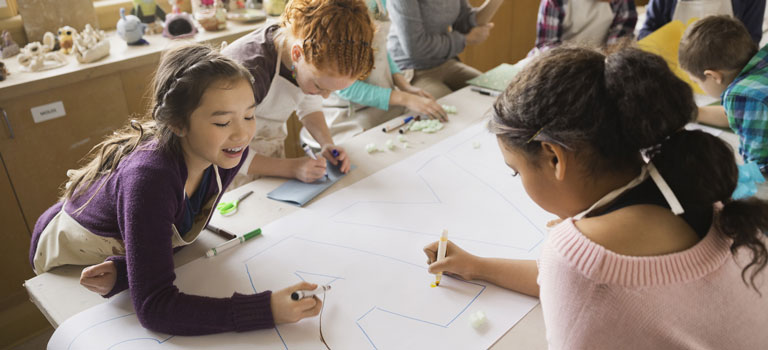How Cultural Differences Can Benefit Your Classroom

Every student brings something unique to the classroom, but not everything they bring is valued equally. For the 4.6 million English language learners (ELLs) in U.S. public schools, their experiences and knowledge are often categorized as cultural mismatches.
When educators perceive cultural differences as a problem or source of conflict, they’re viewing ELL students from a deficit perspective, according to Ekaterina Moore, a professor in USC Rossier’s online TESOL program. Instead, ELLs should be seen as an asset.
Questions like, “What does this student lack?” do a disservice to both the student and school community. Educators should be focusing on the opposite: “What does this student bring into the classroom?”
Defining differences
A cultural mismatch is caused by tension between a student’s home and school culture, and is often due to differences in areas that include religious and spiritual beliefs, cultural practices, family background, and language.
Moore said differences in language socialization — how people learn to use language as a part of their community or society — are a common source of this mismatch.
Primary language socialization begins at home, Moore said, where people learn how to become a member of their family. For English language learners, a mismatch often occurs during secondary language socialization, when children enter school and learn how to become a member of their school community.
For mismatches that stem from cultural differences, Kimberly Ferrario, a professor in the TESOL program, points to an example she’s seen in her Middle Eastern students.
“You have to be aware and sensitive to the fact that maybe men and women have never been in classrooms before together,” she said.
Ferrario says we should view cultural differences as funds of knowledge. These funds are a result of students’ unique cultures, and educators should find ways to incorporate them into their classrooms.
“Each student has an amazing story to tell about their family. Bringing that into the classroom, valuing it and honoring the different experiences from different family backgrounds is so important.”
Strategies for educators
The key to turning cultural mismatches into assets, Ferrario said, is to allow students to share their experiences.
“Each student has an amazing story to tell about their family,” she said. “Bringing that into the classroom, valuing it and honoring the different experiences from different family backgrounds is so important.”
1. Acknowledge biases and privileges
Moore and Ferrario agree educators should start by evaluating their current approach and potential biases: Where are they counting ELLs out?
Educators who can reverse their own deficit perspective have the power to reverse it in their classrooms and communities as well. Moore said it starts with teachers understanding their ideologies and mindsets.
Once educators better know their own perspective, they should do everything they can to understand those of their students. This means learning about the individual stories of students and their families. Educators who know where students are coming from will be able to better anticipate cultural mismatches and prepare for them.
2. Facilitate trust in the classroom
After gaining a better understanding of their students, Ferrario said educators should create a student-centered, teacher-facilitated classroom filled with quality interactions.
“[Develop] trust in your classroom so that students can bring who they really are. They can speak from their own perspectives and they can speak from their experiences and they know it’s going to be valued,” she said.
Incorporating texts from different cultures, giving students the opportunity to share their stories in writing assignments or presentations, and allowing students to ask questions of each other are just some ways educators can create this community.
3. Expand school communities to families
Families are an asset as well, and Moore recommends educators engage with students’ families in their education as much as possible.
“We don’t want that disconnect in families because we think in monolingual terms,” she said. “Try to appreciate and value the knowledge that they bring in and learn about the cultures.”
There are different paths to ending the deficit perspective, and every educator plays a role.
“There’s no silver bullet, there’s no ‘follow the recipe,’ ” Ferrario said. “When teachers truly take the time to invest in getting to know their students, as well as helping to form that sense of collaboration … where what everyone brings to the classroom is valued, it’s so important.”
Citation for this content: USC Rossier’s online master’s in teaching degree.


